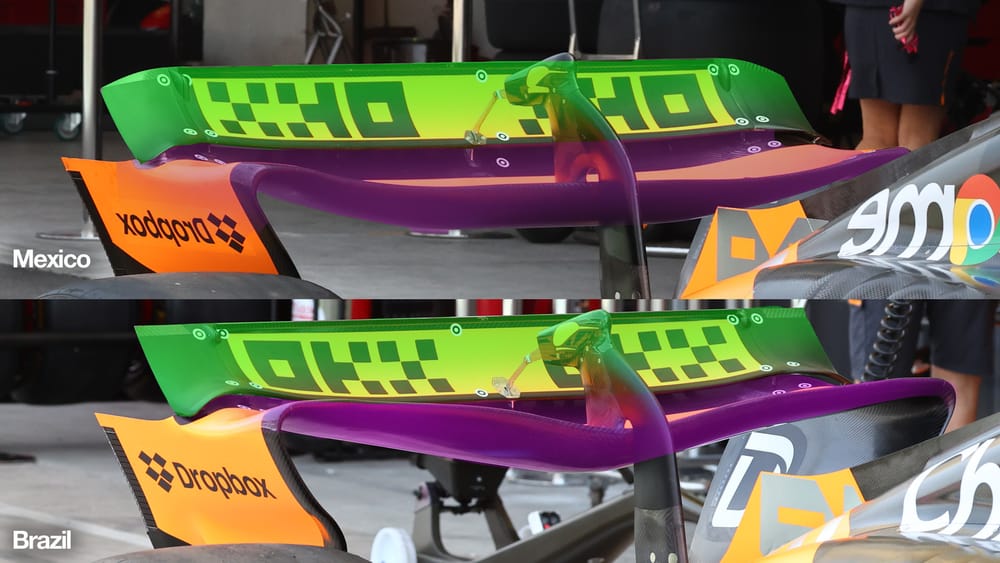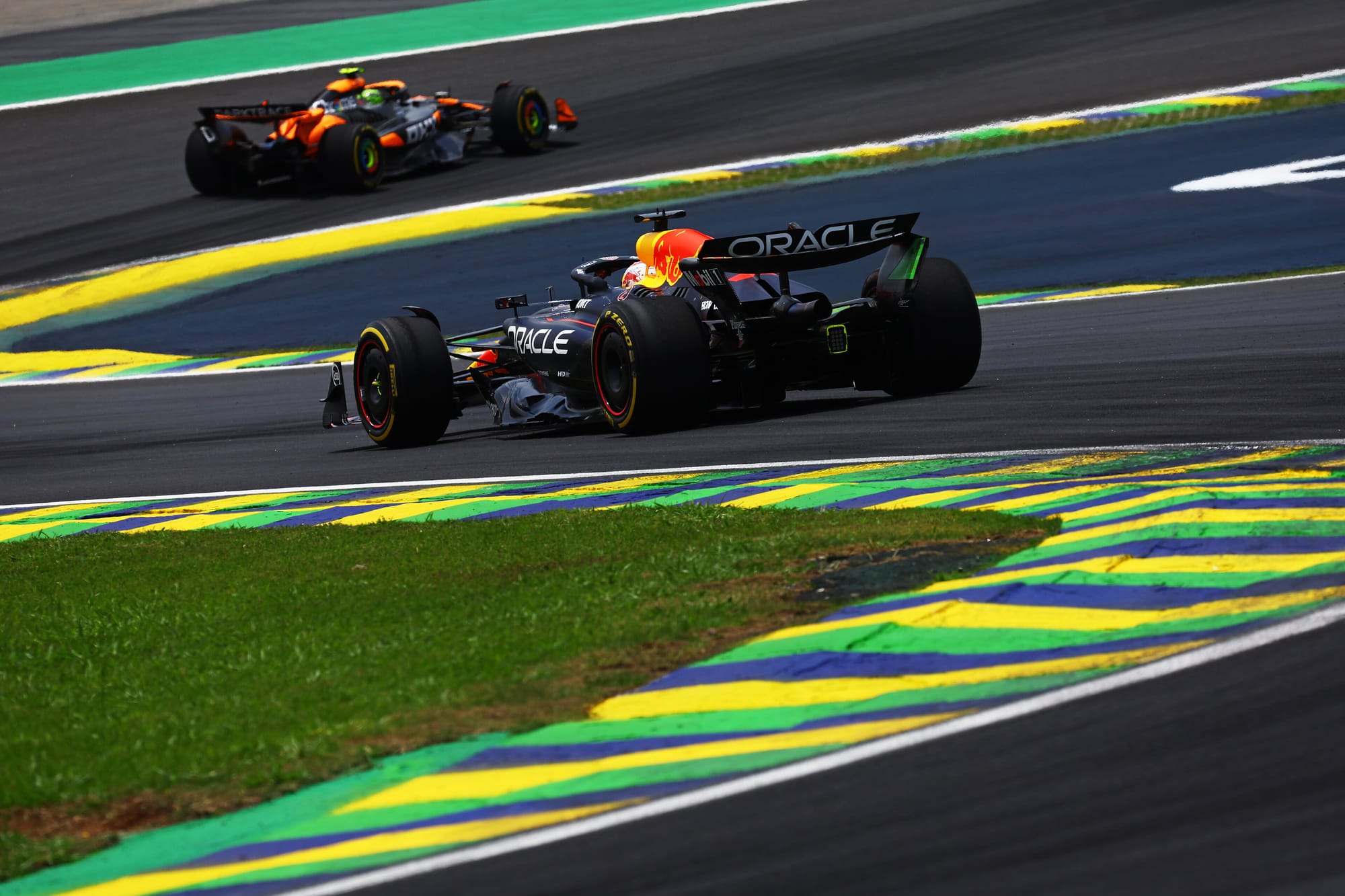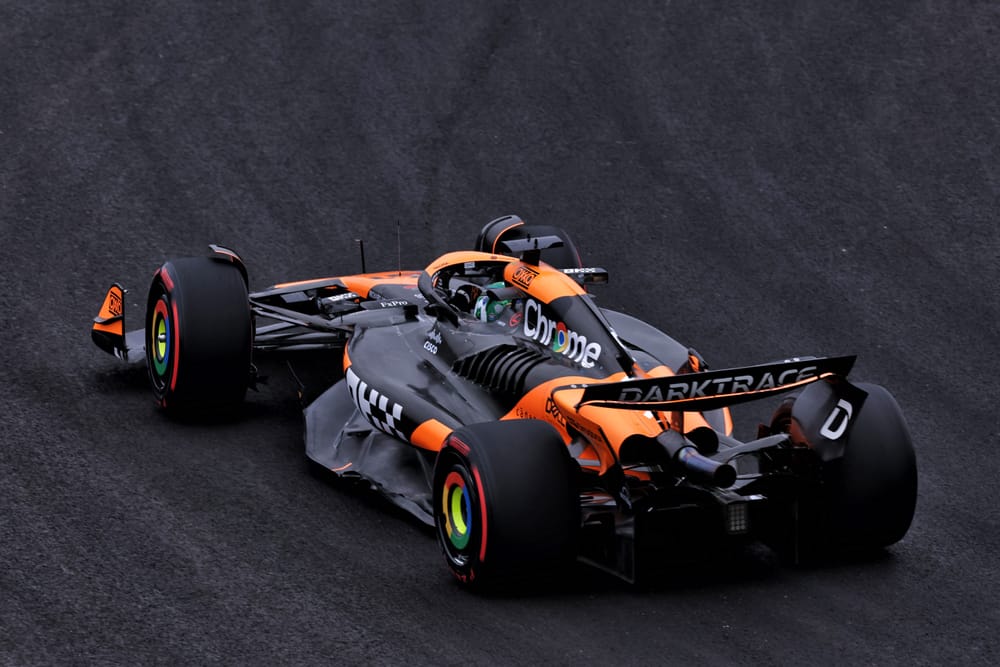Up Next

McLaren introduced another version of its Formula 1 rear wing and beam wing assembly for the Brazilian Grand Prix.
And it then dominated both sprint qualifying and the sprint race, so this looks like it is another positive development from the team that has done the best job in development across the 2024 F1 season.
What's impressive about McLaren is that each of its development steps works as expected and brings improved performance.
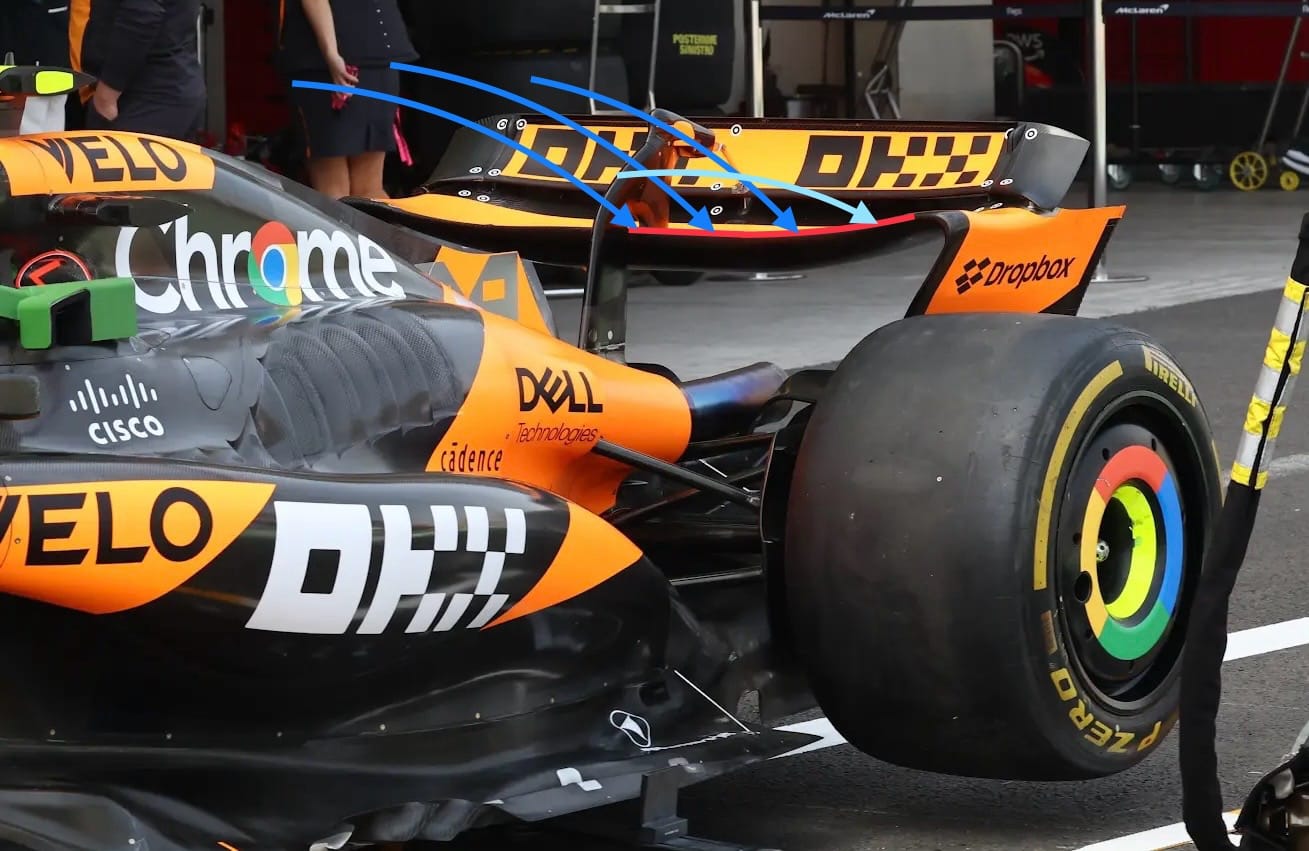
On any wing assembly, there is what is called the stagnation point. I have highlighted this with the red line on both the old (above) and new version (below).
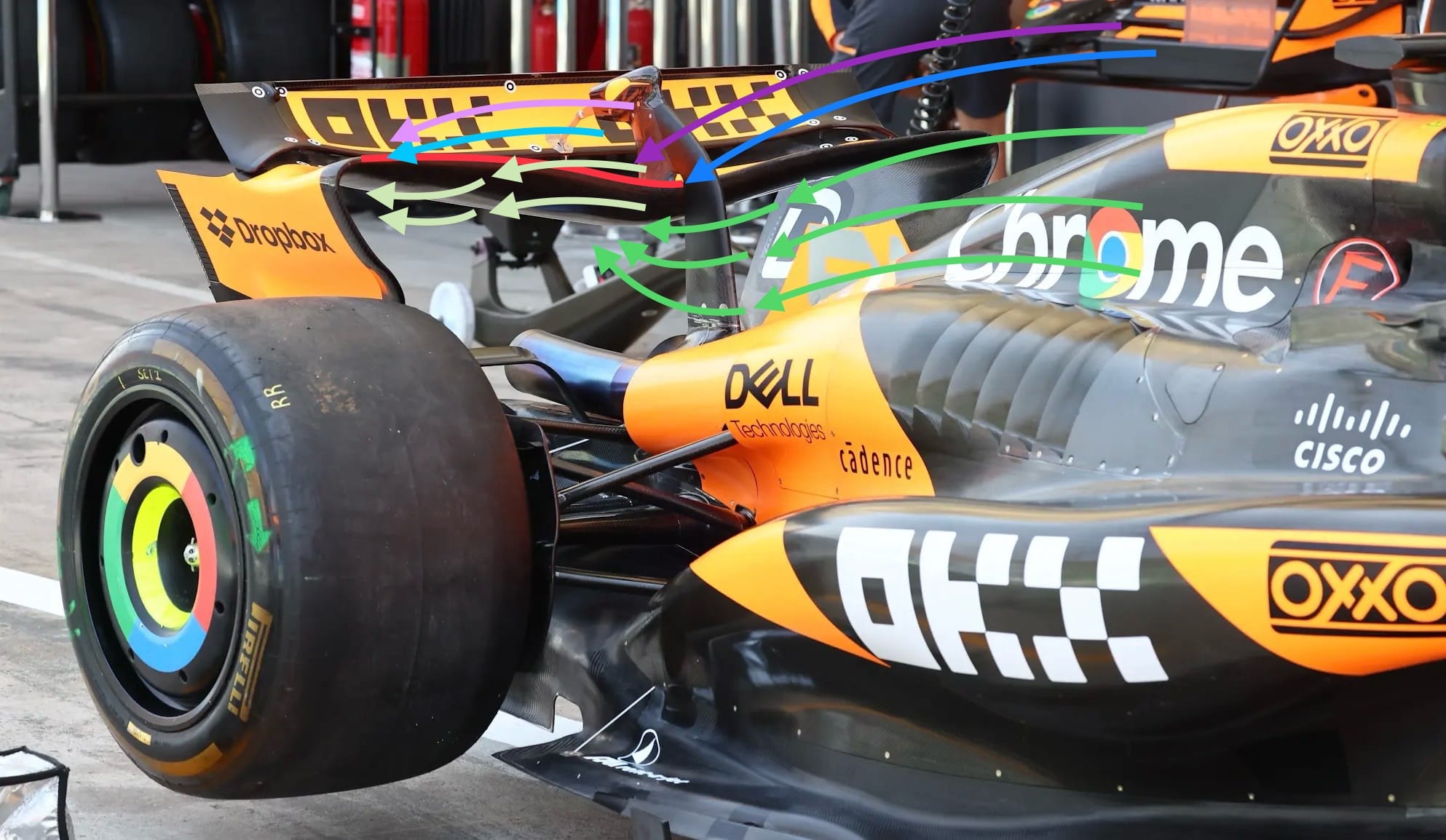
The new rear wing is much more of ‘V’ shape than the previous version. As I always say, the aerodynamic components downstream can only work with the airflow coming off the components upstream.
In the case of the rear wing, it is the blockage created by the airbox and engine cover that is the big upstream influence on the rear wing. That's because of the flow direction highlighted with various arrows inboard and outboard.
The dark blue indicates the separation flow point inboard and the light blue the outboard separation point.
The dark green shows the flow pulled under the rear wing inboard, with the light green showing the flow pulled outboard.
The dark magenta shows the flow passing over the top surface inboard, with the light magenta showing the flow going over the top surface outboard.
Because of this variation in flow direction, the aerodynamic load across this wing span will diminish as we go outboard.
This means that when the DRS is available and the rear flap opens, the central section of wing will stall earlier. It will therefore have more of an effect on the diffuser, which is more central on the car.
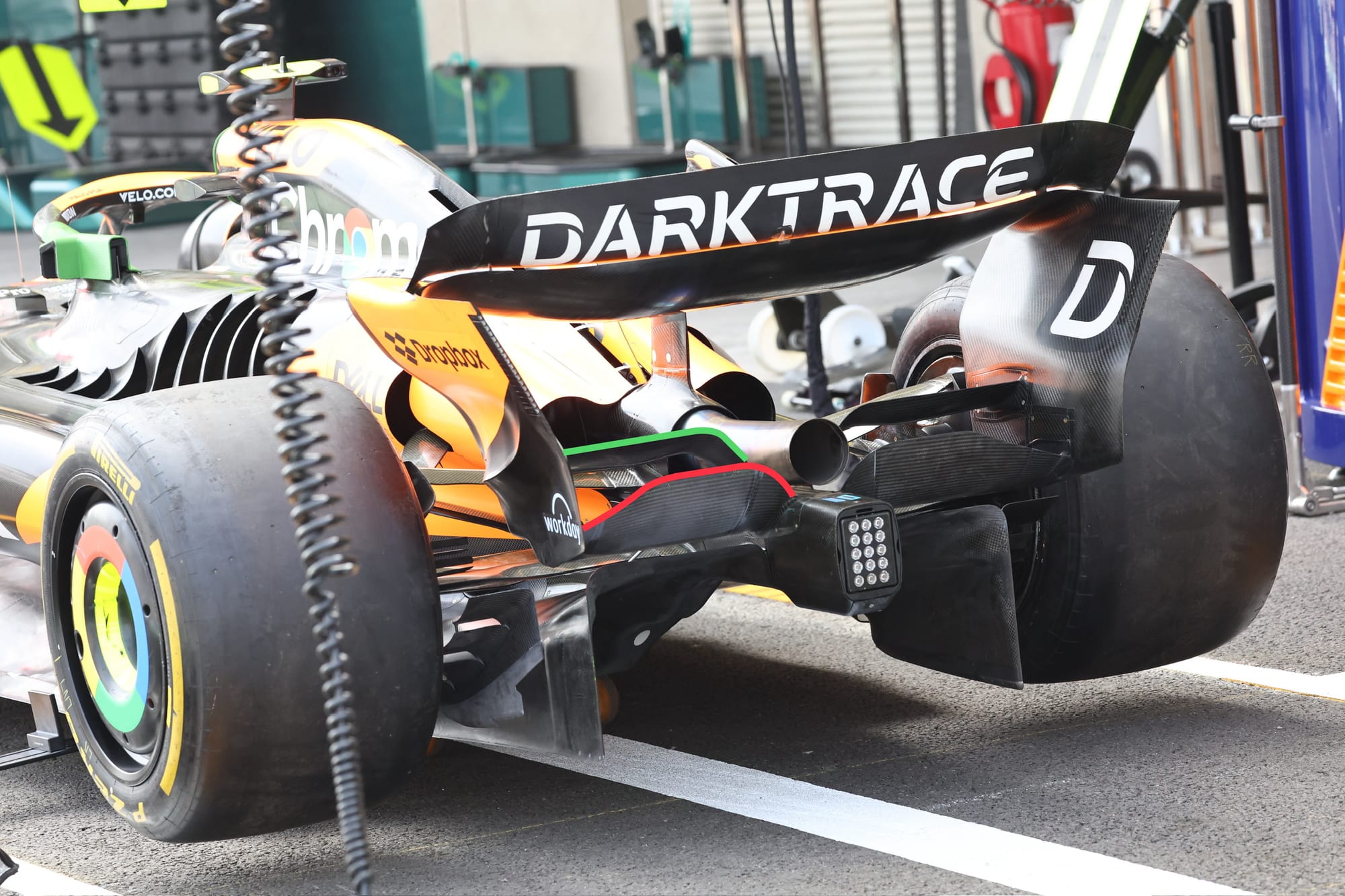
The old McLaren rear wing - shown above - had a much wider central stagnation point, meaning that more flow was pulled down under the wing's lower surface. So when the DRS is available and the rear flap opened, the camber on the mainplane would still work as a one-element wing. In turn, this would mean there was less influence on the flow coming out of the diffuser.
The new beam wing development is more in line with optimising the airflow between the upper wing and the diffuser. The upper element highlighted with the green line on the trailing edge in the image below is used to help the upper wing and the diffuser 'talk' to each other. If you can achieve this, the drag reduction when the DRS is in use will be greater. As I have called it before, it creates a ‘triple' DRS effect, stalling to some degree the upper wing, the beam wing main plane and the diffuser.
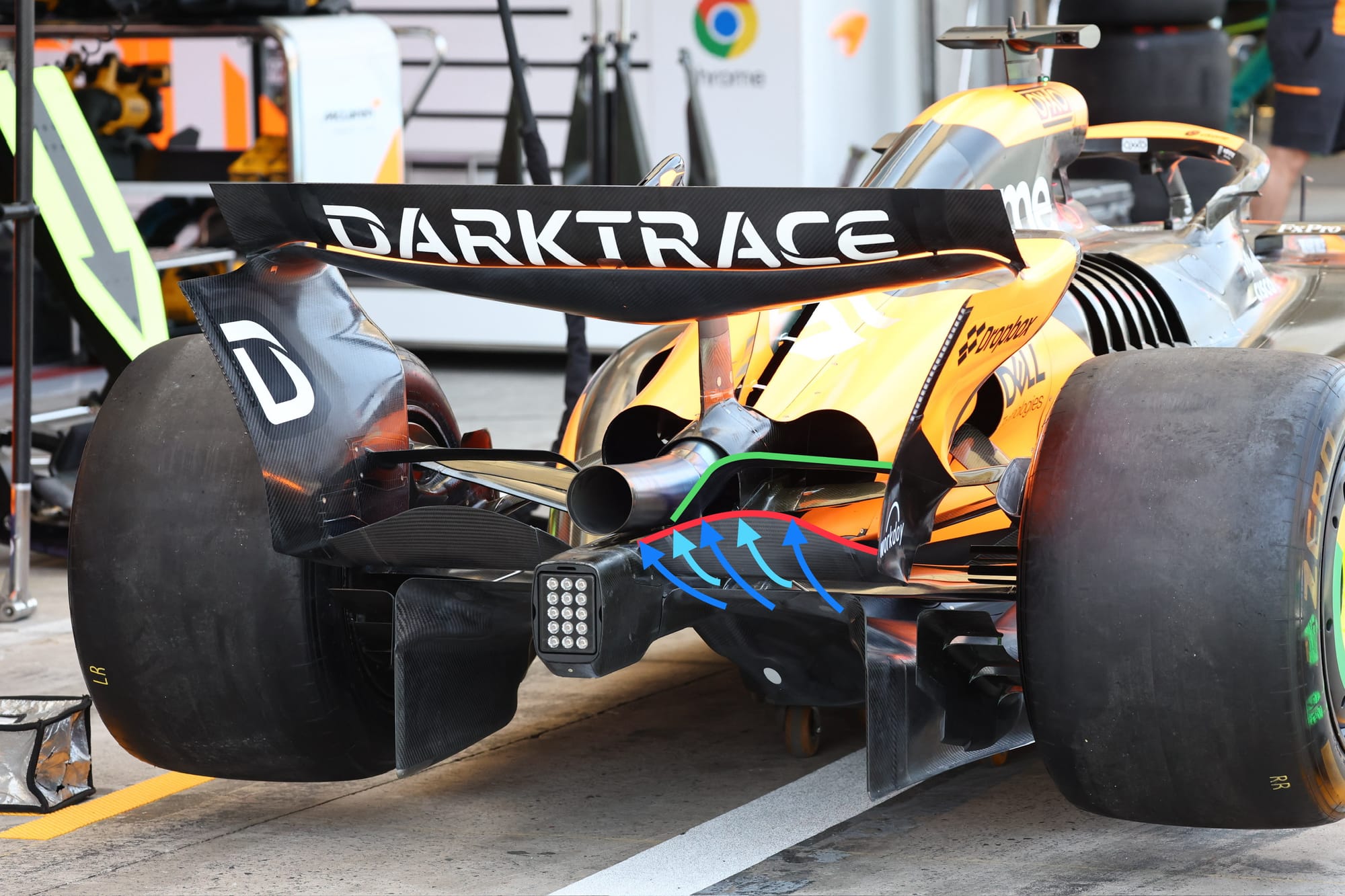
As you can see above, the mainplane of the beam wing with its trailing edge highlighted with the red line is more or less a continuation of the diffuser surface. The flow through the slot gap highlighted with the light blue arrows helps extract the flow from the diffuser. which is highlighted with the dark blue arrows.
The new beam wing mainplane trailing edge is just that little bit less uniform. As with the upper wing development, this will give an earlier and probably more progressive drag reduction. More importantly, it should give an earlier and more progressive flow reattachment when the DRS is shut.
This should be a positive in the initial part of the braking zone as it gives the driver just that little bit more confidence when they hit the brake pedal.
I would suggest that this new assembly would give as much downforce as the earlier package, if not more, and reduce the drag by more when the DRS is in use. If so, that equates to more downforce, which has a positive to reduce tyre degradation and more top speed, which is a positive if you have to overtake someone, which now seems to be only possible on the straight. Try in a corner and you end up getting pushed off the track...
But with the speed McLaren has shown at Interlagos so far - partly thanks to this rear wing upgrade - wheel-to-wheel battles might not be such a problem for it this weekend.

